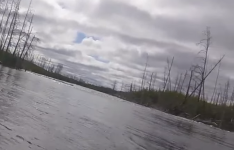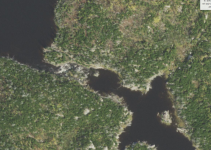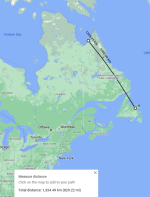That's an excellent point and may explain why the guy wasn't able to make a rescue attempt himself.
Also, not being there, it's hard to tell just how significant the upstream rapids were. I know that stuff that looks big and bouncy when you go down through it often looks pretty tame when viewed from downstream looking back up.
Here's a picture of the rapid just upstream of where they put in, you can see it as Son starts to wade the boat to where he pulls it out of the water. It should be noted that you can see at the put-in and immediately afterwards (plus many other places) that the water levels were very high even though they were below the peak (all of northern Ontario had record setting levels this spring). In a normal year and especially later in the season the upstream rapid would be not much of anything even at high levels if you were coming downstream. Going upstream is a different story, the calm water was on their left so they would have paddled on that side, when they reached the "rapid" you can see that the left is blocked, not 100% sure, it could be a tree or maybe it's the "ledge" that creates the rapid, a part that normally would be fully out of the water. In any event, paddle up to the "rapid and then turn to get around the obstruction, bow enters the current, boat turns sharply, bad leaning and over you go into deep water with strong current with a very scary swim not far away.

Here is a Satellite image of the rapid, flow is right to left, they were travelling left to right. The water levels are much lower, there is no water going through the overflow channel where you can see the normal portage. The island appear much bigger but for them everything except the tree was under water. You can see the obstuction, about 70m upstream from the island/portage put-in. There is no obvious sign of a rapid there, perhaps a swift, the resolution isn't good enough to determine. One thing for sure




